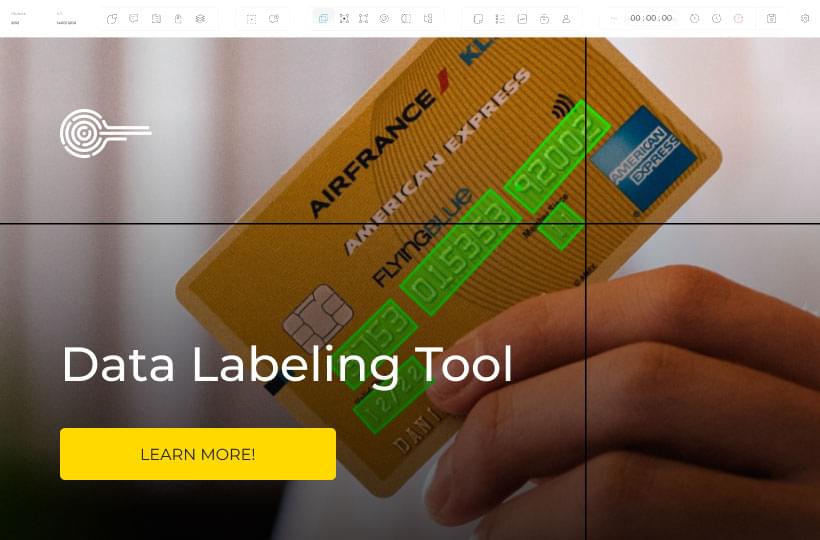How A Labeling Tool Enhances Data Governance [And Monetizes It]
Let’s distill exactly what data governance means before we get started. Handling data comes with rules to protect sensitive data and individuals. Data governance is the process of handling that data, something most of us pay little attention to. At the micro level, it affects businesses, where the data can become an asset. Countries exercise data governance on the flow of data across and within borders.
Individuals and businesses are creating more data in modern times than at any point in human history. Customer lists, medical records, and social media are just a few ways we leave our digital footprint in others’ hands. These sources become actionable data for future strategies after we use data labeling tools. So let’s discuss how that information gets sorted and handled.

A Brief Explanation Of Data Governance And Why You Need It
Data governance (DG), or data management, is the use, integrity, and security of data held by organizations. This sorting and optimization will be fully automated in the future, but for now, it’s handled by IT staff and data management professionals. The top five countries for data management are Japan, Norway, Switzerland, Iceland, and nations of the European Union.
Core Data Governance Principles
There are several core principles of data governance:
- The expectation that individuals should be left alone
- Individuals should have control over how their data is used
- Handling, collecting, and distribution need regulation
- Regulations must be enforced
Data governance remained in its infancy until the EU passed protective regulations in 2016. In the decades before the General Data Protection Regulation, businesses began realizing the value of well-managed datasets. Forward-thinkers knew that information would be a commodity.
In recent history, large data breaches have gone from seldom seen to seasonal. Tech giants like Facebook, Sony, Yahoo, and Equifax were just a few to lose user information to unknown assailants. Digital attacks like this have caused data governance to blend IT with security. This data loss can be devastating and calls for an updated approach to data management.

Labeling Tools In Data Governance
As you may have surmised, labeling tools assist us with labeling data. The labels will help machine learning processes access and utilize that data, potentially monetizing it. When a client makes an online purchase, how can a business convert that raw information into something actionable?
There is a slew of valuable data from just a single transaction. Using our online shopping example, let’s look at what data a customer divulges. There are obvious elements, such as their name, location, and purchase details. Looking a little closer, maybe we’re able to monitor how the customer navigated a website and how long it took to make a purchase. That’s vital consumer information to convert into a strategy within some rules.
How We Use Data Governance And Privacy
You trust the business to handle your information when you buy products online thoughtfully. So let’s take a closer look at the data governance process, starting with the collection method.
Discovery Of Data
Before we start any form of governance, we need to take a look at the data a business has. This includes readily available sources like purchase records, customer profiles, and more obscure sources like company emails or internet-linked devices.
Classification
When the scope of our data is clear, it’s time to sort and classify it. Just like labeling cardboard boxes in your storage, we’ve got to package everything into sets. For a business, this may mean tagging financial, customer, and product data with labeling tools. Someday soon, machine learning data labeling tools could fully automate classification.
Creating Policies For The Data
How does a business know what data to hold on to, share, or delete? The policy differs depending on where a business is located. Aspects of personal data must be hidden and safeguarded automatically, while others might be distributed or saved.
Enforcing Policies With Rules
As data governance transitioned from ideas into real policies, the laws had a similar evolution. For example, the General Data Protection Policy protects individuals’ confidentiality and outlines a specific use for their information, among other things.

The Future Of Data Governance Could Be Very Bright
If it continues to be implemented in a way that serves individuals, data governance will perpetually benefit society. However, there is an unseen balancing act going on behind the scenes. Data governance weighs individual’s rights against a corporation’s, and the correct balance benefits both parties.
Customer conversion will increase, but so will customer satisfaction. Businesses will use their data in even more genius ways to attract new revenue while keeping existing clients content. These days we view chatbots as nothing more than a middle man in the support process. One day, it will be magnitudes more helpful and resourceful than a human could hope to be. Mortal touch will be something we nostalgically cling to, though ultimately trade, for endlessly competent AI support.
Data management will become just as automated as other tech and IT sectors. The human element is going to be supervisory instead of a core labor source. AI labeling tools won’t just manage datasets more efficiently, but they’ll also easily extrapolate future strategies.